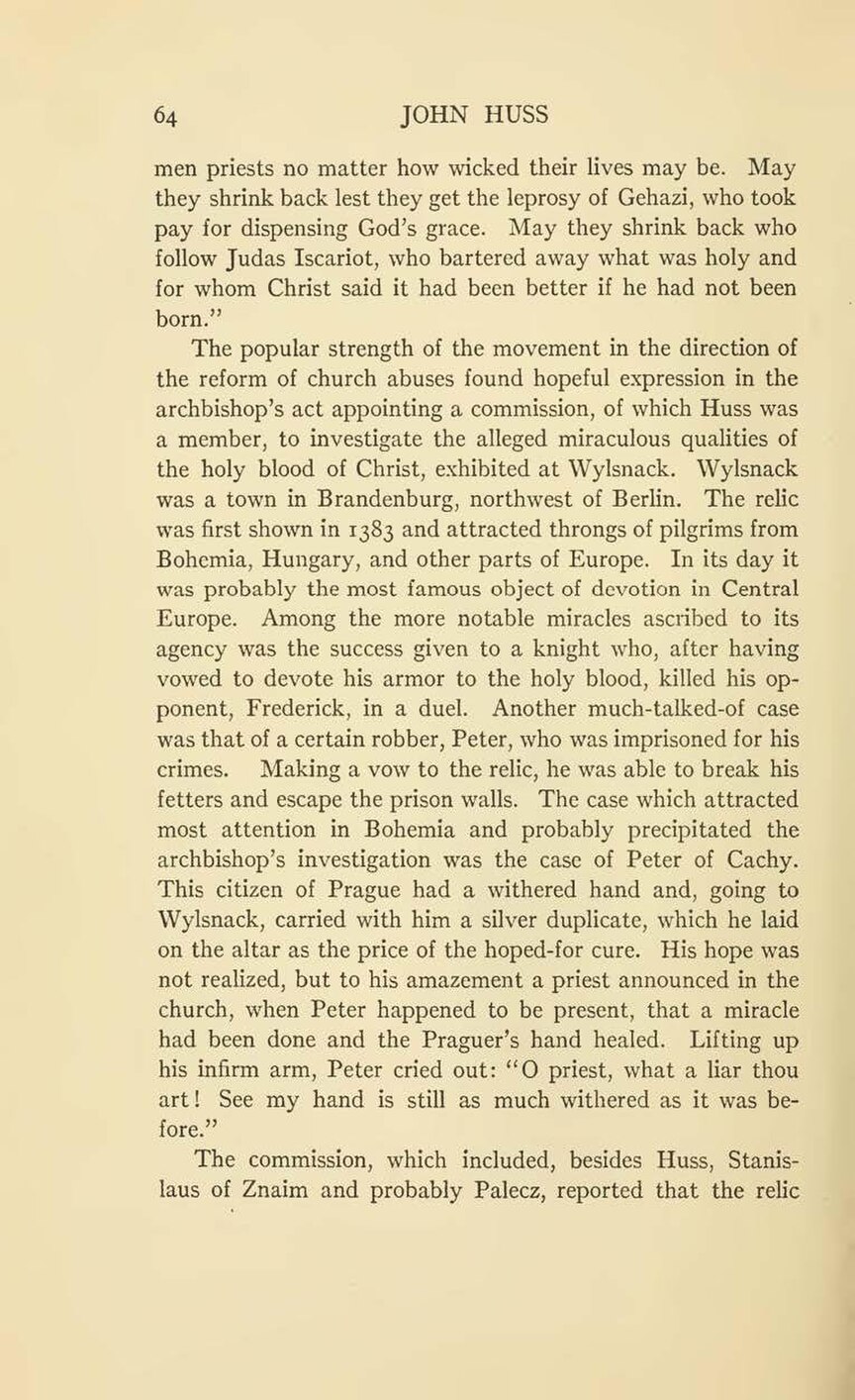men priests no matter how wicked their lives may be. May they shrink back lest they get the leprosy of Gehazi, who took pay for dispensing God’s grace. May they shrink back who follow Judas Iscariot, who bartered away what was holy and for whom Christ said it had been better if he had not been born.”
The popular strength of the movement in the direction of the reform of church abuses found hopeful expression in the archbishop’s act appointing a commission, of which Huss was a member, to investigate the alleged miraculous qualities of the holy blood of Christ, exhibited at Wylsnack. Wylsnack was a town in Brandenburg, northwest of Berlin. The relic was first shown in 1383 and attracted throngs of pilgrims from Bohemia, Hungary, and other parts of Europe. In its day it was probably the most famous object of devotion in Central Europe. Among the more notable miracles ascribed to its agency was the success given to a knight who, after having vowed to devote his armor to the holy blood, killed his opponent, Frederick, in a duel. Another much-talked-of case was that of a certain robber, Peter, who was imprisoned for his crimes. Making a vow to the relic, he was able to break his fetters and escape the prison walls. The case which attracted most attention in Bohemia and probably precipitated the archbishop’s investigation was the case of Peter of Cachy. This citizen of Prague had a withered hand and, going to Wylsnack, carried with him a silver duplicate, which he laid on the altar as the price of the hoped-for cure. His hope was not realized, but to his amazement a priest announced in the church, when Peter happened to be present, that a miracle had been done and the Praguer’s hand healed. Lifting up his infirm arm, Peter cried out: “O priest, what a liar thou art! See my hand is still as much withered as it was before.”
The commission, which included, besides Huss, Stanislaus of Znaim and probably Palecz, reported that the relic
